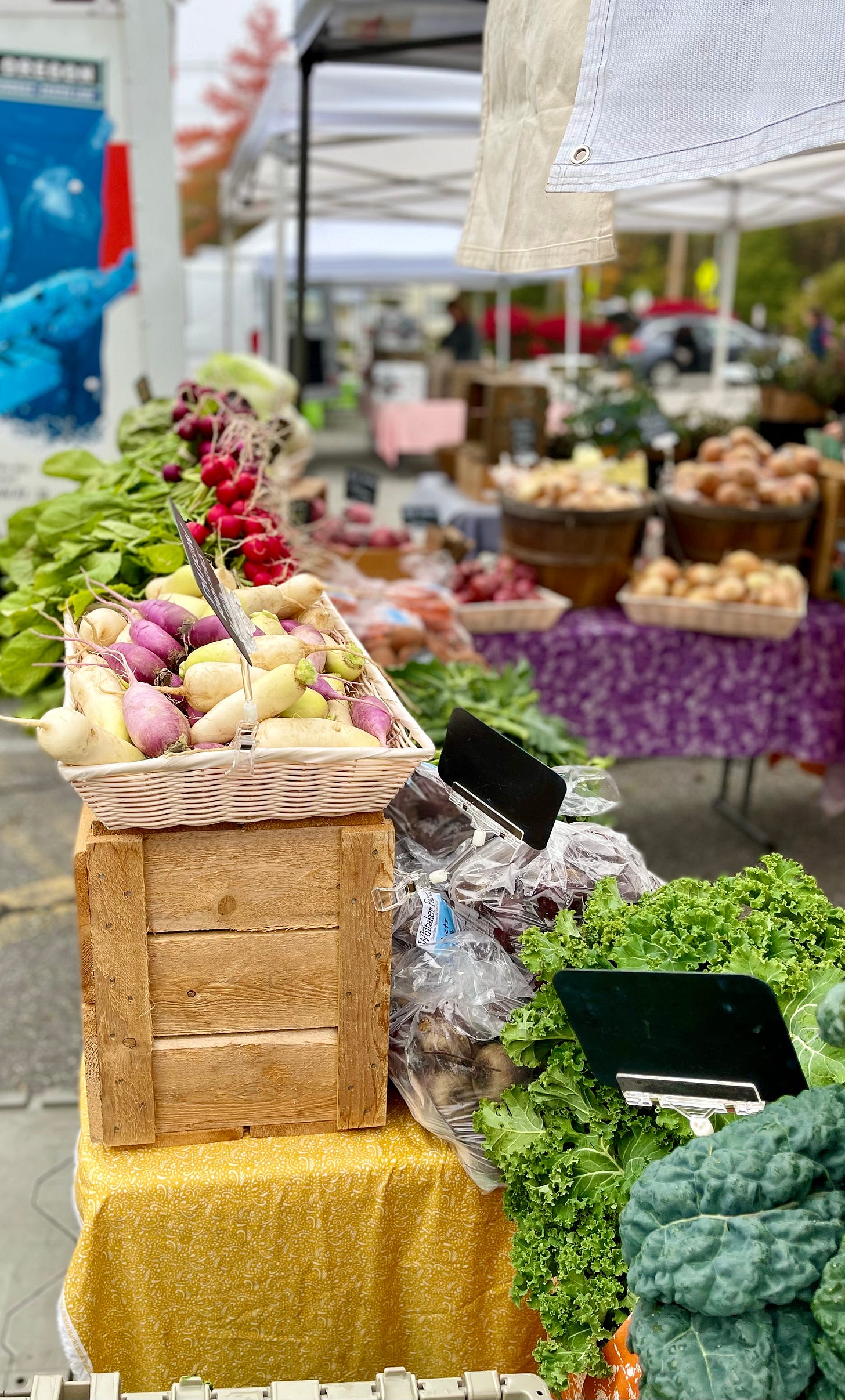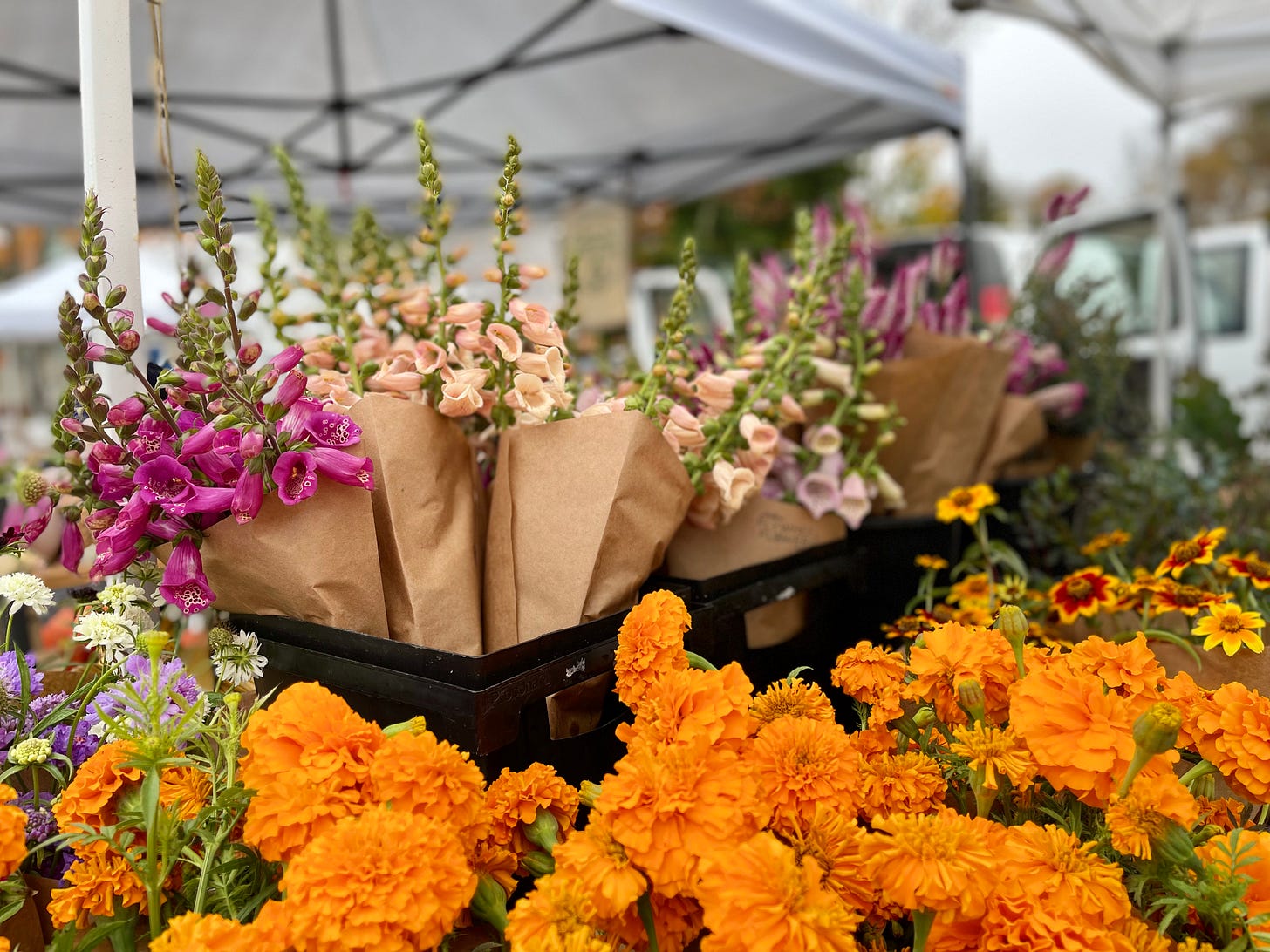BAR HARBOR—People wander and stand in lines, feet touching and then planted on the asphalt in the far parking lot of the MDI YMCA on Park Street in Bar Harbor. Some wear masks. Some don’t. Some wear parkas. Some wear shorts. Some are tourists. Some locals.
One woman throws a canvas bag over her shoulder and reaches out for a hug. “I haven’t seen you in forever.”
A man steps into that hug and they rock, right in the center of everyone moving toward the stalls, embracing and smiling. As people step around them, they smile too. A small dog near the meat stand barks at a slightly bigger dog, owners tugging on leashes, offering apologies. Someone buys cranberries. Someone buys smoked meat. Someone buys mushrooms. Or goat cheese. Or flowers. Or noodles. Someone stares at a gray bin full of basil and squeals.
Farmers’ markets increased from 100 to 3,000 between 1960 and 2000. Hancock County currently has several. Many believe they began in Egypt about 5,000 years ago. Bartering and trade was how transactions were made. According to the Convent Market, North American farmers’ markets began sometime in the 1600s. It was how people in cities could get produce, dairy and meat. It also became a magnet for people to go into the centers of cities.
Convent Market writes,
“In the 1800’s and 1900’s, farmers’ markets were not only important for economic success, but also social interaction as it was often the only means for rural and urban community members to meet.”
That’s also true at the Eden Farmer’s Market in Bar Harbor. Friends greet friends. Neighbors meet neighbors. Locals sometimes catch up with the people manning the stands, occasionally to the impatience of a visitor waiting for kale, but it’s all part of the feeling, the connection of the market.
Farmers’ markets fell out of favor in the 1950s and 1960s as grocery stores sprouted up around the country. And according to Covent Market by the 1990s estimates say, “Food in the United States traveled an average of 1,300 miles and changed hands six times before being eaten.”
According to Becky Henne of the Michigan State University Extension, that is now an average of 1,494 miles for food to get from source to market. In Iowa, where they did the study, locally produced food travelled 56 miles.
“It’s so beautiful,” a tourist from New York says, hand grazing over some flowers.
The man next to her breathes out, too. “It is.”
The Eden Farmer’s Market runs from 9 to 12 on Sundays and will continue until the end of October. There are also a few summer and fall community-supported-agriculture (CSAs) shares on the island for those who want to support local farmers. In North American, CSAs are believed to have begun in the 1980s in New England, but began in Japan in the 1960s when women wanted to support local, small farms and families instead of industrial architecture. According to the Food Revolution Network, Swiss, Chilean and French farmers also caught on.
LEARN MORE!
https://americanhistory.si.edu/food/resetting-table/farmer%E2%80%99s-markets
https://coventmarket.com/a-brief-history-of-farmers-markets/
https://www.canr.msu.edu/news/how_far_did_your_food_travel_to_get_to_you
https://foodrevolution.org/blog/what-is-a-csa/
https://www.facebook.com/BarHarborEdenFarmersMarket










